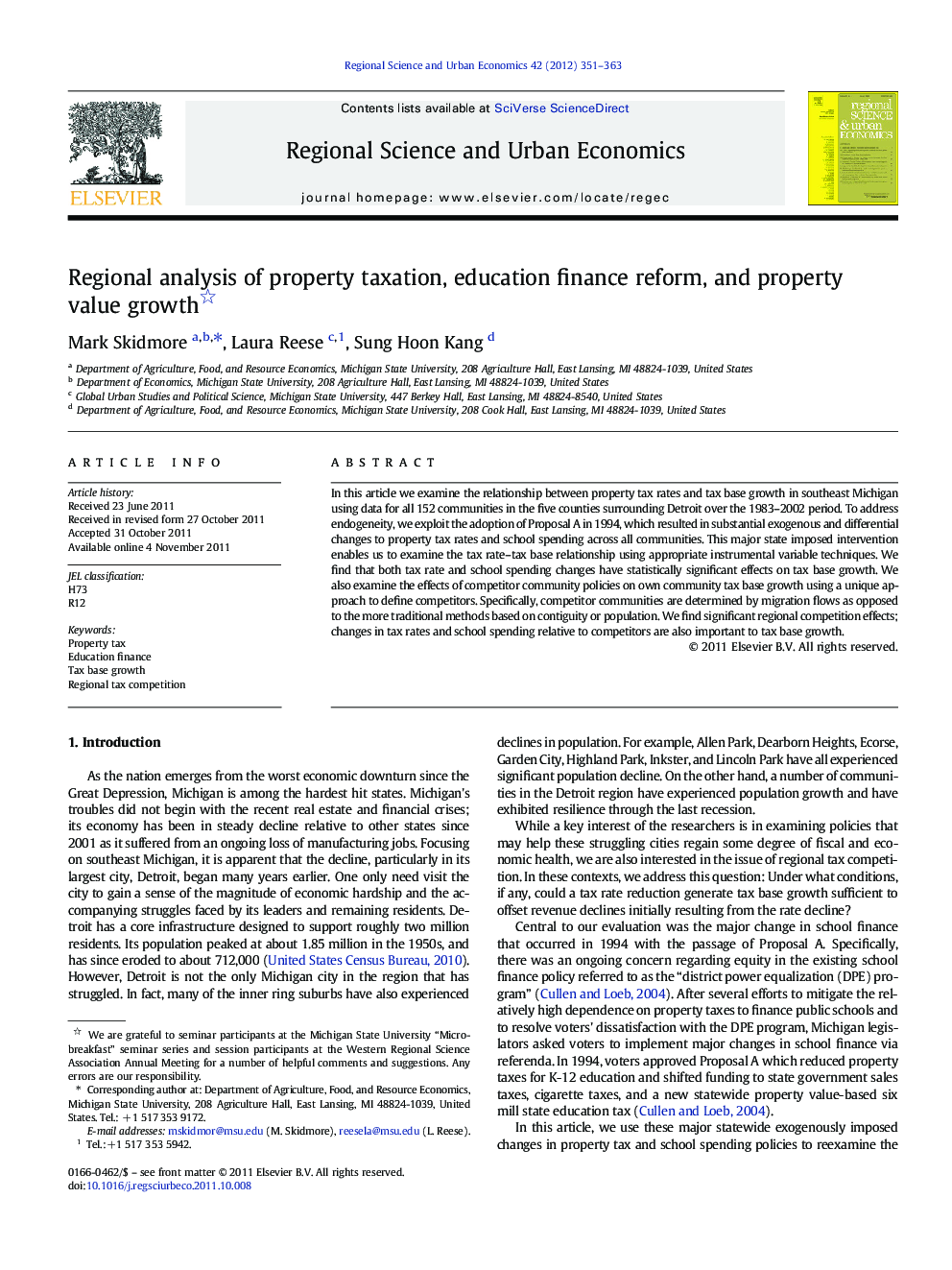| Article ID | Journal | Published Year | Pages | File Type |
|---|---|---|---|---|
| 981126 | Regional Science and Urban Economics | 2012 | 13 Pages |
In this article we examine the relationship between property tax rates and tax base growth in southeast Michigan using data for all 152 communities in the five counties surrounding Detroit over the 1983–2002 period. To address endogeneity, we exploit the adoption of Proposal A in 1994, which resulted in substantial exogenous and differential changes to property tax rates and school spending across all communities. This major state imposed intervention enables us to examine the tax rate–tax base relationship using appropriate instrumental variable techniques. We find that both tax rate and school spending changes have statistically significant effects on tax base growth. We also examine the effects of competitor community policies on own community tax base growth using a unique approach to define competitors. Specifically, competitor communities are determined by migration flows as opposed to the more traditional methods based on contiguity or population. We find significant regional competition effects; changes in tax rates and school spending relative to competitors are also important to tax base growth.
